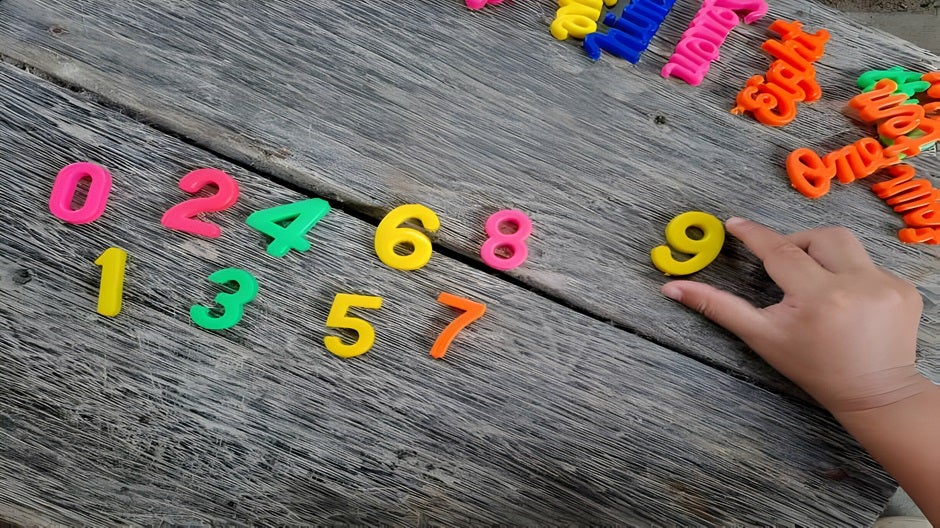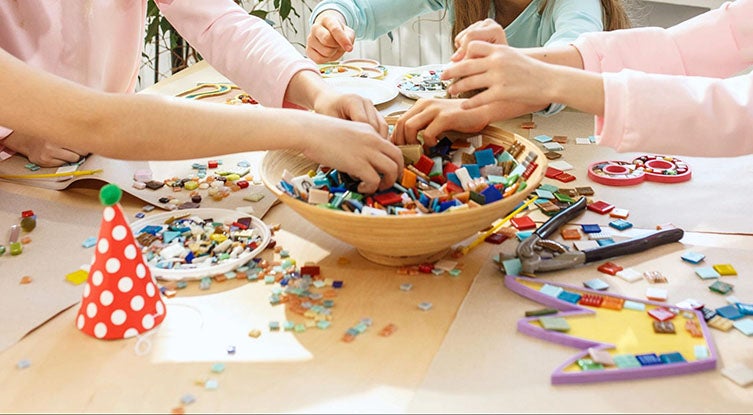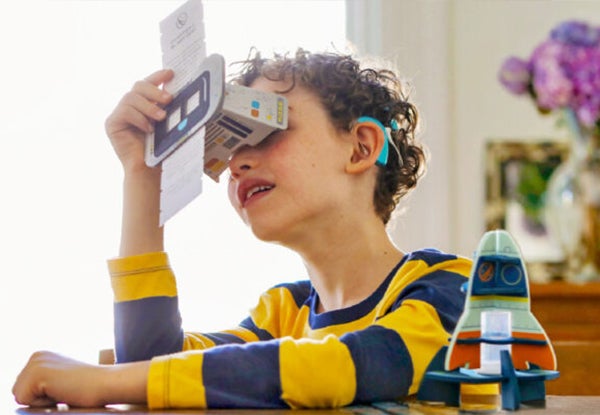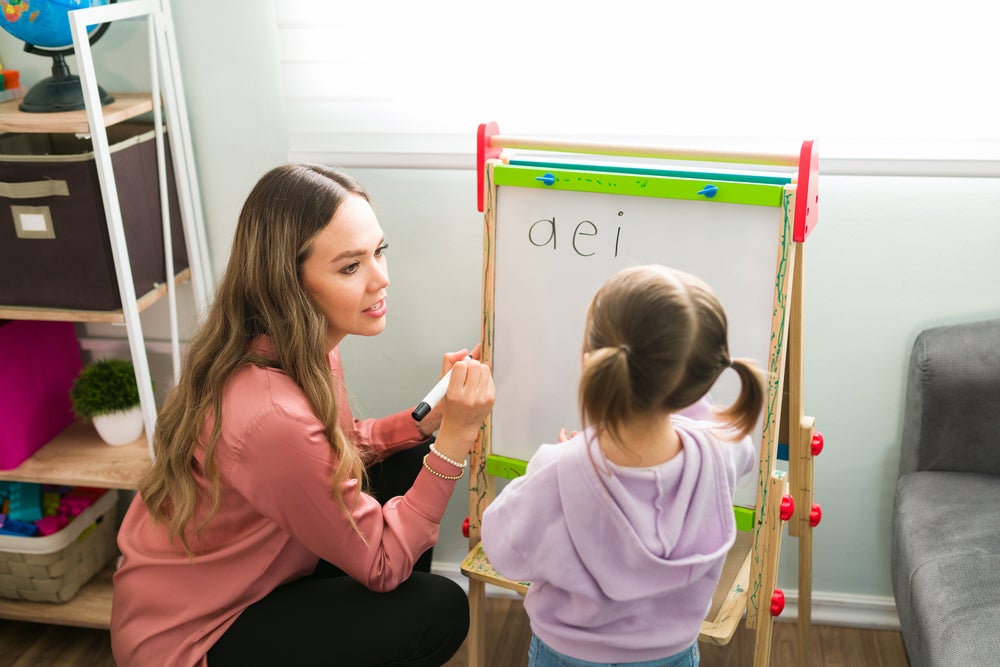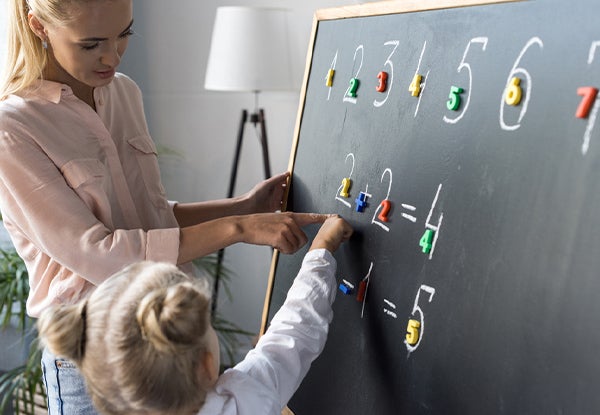When you read a book, or a grocery list, or a blog post like this one, you’re looking at words on a page (or screen) and translating them into speech. This is decoding in reading.
It’s an unconscious process. You probably aren’t thinking, “I see ‘When’ at the beginning of this post, and I know it sounds like ‘/w/ /e/ /n/.’”
For most kids, decoding isn’t intuitive. They need to learn the skill explicitly and systematically. Decoding is a foundational skill on which the ability to sound out new words depends, so it’s critical for kids to understand it.
We can help you find strategies for helping your child learn to decode.
Table Of Contents
- What Is Decoding in Reading?
- Skills Required for Decoding
- The Spelling and Reading Connection
- 18 Practical Tips to Enhance Decoding Skills
- Incorporating Decoding into Everyday Activities
The Short Cut
- Decoding, an important early learning Core Skill, is the ability to recognize that a written word can be translated into a spoken one
- Decoding strategies can help build your child’s confidence and familiarity with the sounds and letters they are trying to read
- Decoding can be fun! There’s nothing like having that “aha!” moment when a kid recognizes a word and says it out loud
- A learning membership that grows with your child can help them develop decoding skills at the right time and in the ways that fit them best
What Is Decoding in Reading?
If you stumble upon a secret message written in code, you might be intrigued and try to decode it so you can see what it says. Reading is similar—you have to decode written words to understand what they say.
Decoding in reading is the ability to turn a written word into the matching spoken word.
For example, when your child sees “cat” written out, they can decode it when they know it has three distinct sounds—/k/ /a/ /t/—that combine to make the word “cat.”
When your child can see a word, understands the sound each letter represents, and can blend the sounds together from left to right to say the word, they are decoding.
Benefits of Learning to Decode
Decoding skills are vital to literacy because once your child can decode words independently, they can begin reading fluently and with comprehension. Without the ability to decode, reading would be a challenge.
It’d be like holding that secret note mentioned earlier but not being able to decipher it, no matter how hard you try. Frustrating, right? Especially if everyone around you can read it with ease.
Learning to decode cracks the code of reading and opens up a whole new world for your child. It allows them to read books, signs, menus, labels—anything with words on it! This not only expands their understanding of the world around them but also boosts their confidence.
Here are some other benefits of learning to decode:
- Improves spelling skills
- Enhances vocabulary
- Increases fluency and reading speed
- Encourages independence in reading
Once your child can confidently decode words, they’ll have the foundation to become a strong reader and enjoy a lifetime of reading.
Skills Required for Decoding

Before teaching decoding, make sure your child understands these prerequisite skills. They’ll make learning to read so much easier!
1) Alphabet Mastery
When your child sees the letter “m,” can they instantly identify the letter and its sound? If not, decoding is going to be a struggle.
Familiarity with the alphabet is a significant predictor of future reading success. Before beginning decoding lessons, make sure your child can tell you the sounds of any letters you will be using.
As a general rule, knowing at least two vowels and eight common consonants gets your child ready to take a step into reading. With those, they can sound out several simple, three-letter words.
For further practice, use the letter recognition activities in this post.
When you come back to decoding, your child will have a much better foundation and will be able to move through the process more quickly.
2) Phonemic Awareness
In addition to knowing what each letter looks like and says, your child needs a certain level of phonemic awareness before they begin reading.
Phonemes are the smallest sound units that make up the words in a language—for example, /c/, /a/, and /t/ are the phonemes that make up the word “cat.” Phonemic awareness is the ability to perceive and use those individual sounds in spoken words.
Your child’s phonemic awareness grows over time. As your child develops the ability to hear sounds in words, they can identify whether a sound is in the beginning, middle, or end of a word. They can also swap sounds in words (e.g., change the first sound in “cat” to get “hat”).
Remember that phonemic awareness is all about the sounds (/r/), not the letters associated with those sounds (could be r or wr, depending on the word).
While phonemic awareness has many different components, two of them are especially crucial for reading success—phoneme blending and phoneme segmenting.
Phoneme Blending
Blending phonemes is the ability to take two or more different sounds and put them together to make a word. To read, your child needs to be able to hear /b/ /a/ /t/ and blend those three phonemes (in the correct order) to make the word “bat.”
If your child can do this quickly and easily, they are likely ready to start decoding. If not, take some time to practice phoneme blending before you move on.
Try starting with a two-syllable compound word, like goldfish. Say the individual parts (gold-fish) and have your child tell you what word they hear. When this is easy, try other two-syllable words (ti-ger) and even three-syllable words (com-pu-ter).
Phoneme Segmenting
Segmenting phonemes (also sometimes referred to as phoneme recognition) is taking a word and breaking it into individual sounds. If your child hears the word “bat,” they segment it by breaking it into /b/ /a/ /t/.
If they can’t yet do this, take time to practice. Try saying a word and have them tell you which individual sounds they hear in it.
Another strategy is to write a simple word on a piece of paper and ask your child to circle each sound as they say it. Then keep practicing until they can quickly and easily segment words into their phonemes.
For further practice, use the segmenting activities in this post.
The Spelling and Reading Connection
Spelling and reading go hand in hand. That’s because decoding and its opposite, encoding (turning a spoken word into a written word), both rely on phonemic awareness.
If your child can’t yet segment words into individual sounds, they will have difficulty spelling. They won’t know which letters they need to write down or the order in which to put those letters.
The good news is that if you’ve been working on phonemic awareness, they should be well on their way to being able to decode and encode. And if they aren’t quite there yet, continued practice can help them improve as readers and writers.
18 Practical Tips to Enhance Decoding Skills
Decoding is one of the foundations on which reading is built. It comes before comprehension because your child can’t make sense of what they’re reading if they don’t understand the relationship between letters and sounds.
Even if your child excels at comprehending a story when you read it to them (which is fantastic!), they may need some encouragement and experience with decoding before they can make sense of stories they read out loud or to themselves.
To help your child build their decoding skills, try these tips:
1) Use Audiobooks

You may have heard that allowing your child to listen to the audio version of a book while they silently read along with it slows down the process of learning to read. It doesn’t!
In fact, it’s a useful way to gain proficiency in decoding because it’s a multisensory experience: Your child is using their eyes and ears to tackle it. It helps kids make the symbol-sound connection.
If your child is able to look at books while you’re in the car, adding an audiobook is a great way to pass the time and, more importantly, to support them on their reading journey.
2) Try a Manipulative
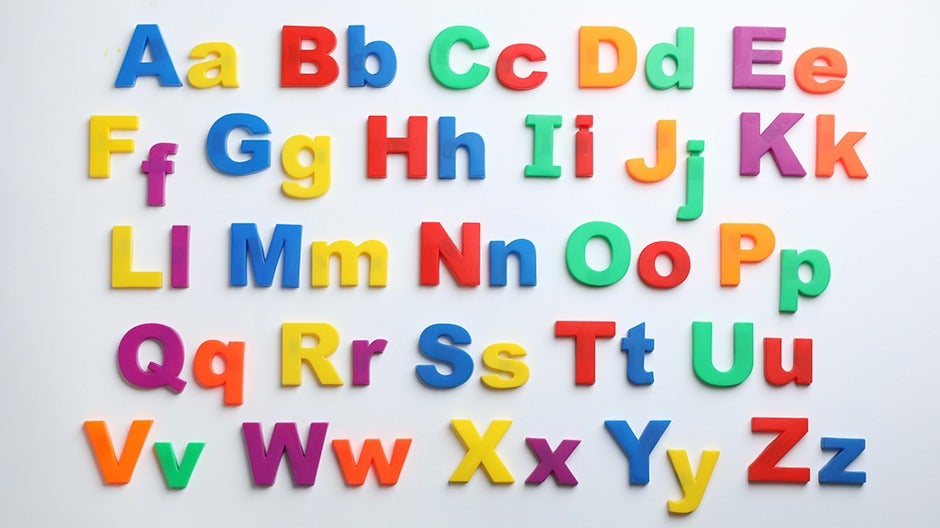
Try giving your child the opportunity to manipulate magnetic letters.
Ask them to put the letters in alphabetical order on your refrigerator door, a magnetic board, or at a table. (Sing the alphabet song as they do it and you’ve got a three-sensory experience!)
Work up to your child spelling words with the letters.
3) Personalize Decoding
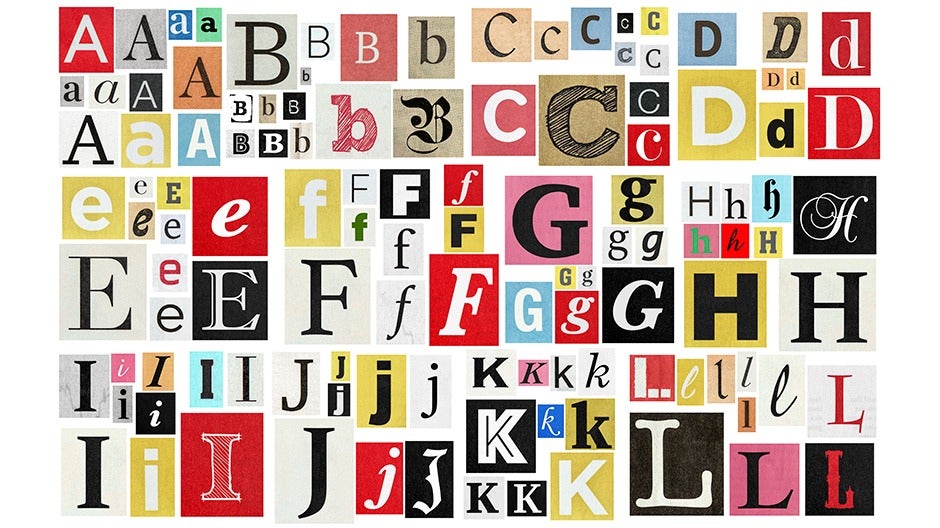
You and your child can sit down and write a letter or email to someone special.
Maybe they have a sibling in college or a family friend who lives far away. Whoever it is, just make sure your child knows them and has something they want to communicate. If the content of the note is relevant to your child, they’ll be much more engaged, which will make the writing less challenging.
You can start by being the scribe for your child. Have them compose the note while you write it down, sounding out each word and pointing to it as you go. As their skills progress, your child can do their own writing.
4) Find Some Fun!

Ultimately you want your child to equate reading with pleasure. If they love reading, they’ll do it more. And if they do it more, their literacy skills will grow.
Try making a puzzle out of a word. Let’s say the word is “cat.” Write it on an index card. Then cut the word into three puzzle pieces, one for each phoneme (c-a-t).
Do this for a bunch of words. Then work with your child to put the puzzles back together. Once they’ve got it, ask them to read the words out loud.
5) Make Sounds Silly
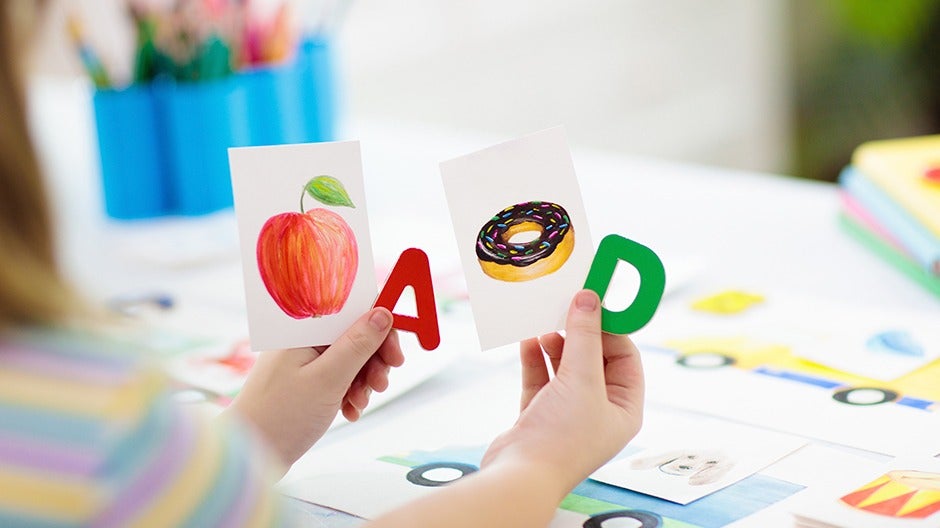
A companion strategy to making decoding fun is to make words sound silly.
The same principle is at work—you want your child laughing while they learn! Try taking a walk and pointing out things you see—a bird, a tree, a flower, a slide—and sounding out the phonemes in silly voices. (“Look! Do you see the bbbbbbb iiiiii rrrrrrr dddddd?”)
Getting as much practice as possible in sounding out words will help build a solid foundation for your child’s ability to read.
6) Try the “Helping Hands” Strategy

Sometimes words on a page can feel overwhelming to a child. They may not be experienced enough with reading to know where to start (at the top and left side of the page).
If this is true for your child, have them follow with their finger, pointing just under each letter and moving slowly across as they sound out the word. Focusing on their finger will help them keep track of where they are in the book.
If your child is struggling with a word, they can also cover up part of the word with their finger and make their task simpler by focusing on one sound at a time. As they sound out the word, they can slowly reveal the next letter.
7) Practice Patience
Let your child struggle with words. Not all the time—you know best when they’ve reached their frustration threshold—but don’t rush in while they’re still engaged and working at it. Sometimes they need time to figure out a word.
8) Let Your Child Fumble

Often, kids look to us to confirm that they’ve been successful reading a word.
This is a good thing! It shows they’re aware that they may not be getting a word right, which makes mistakes easier to address than if they’re whipping through every word in a sentence whether they get it right or not.
But when they make a mistake, see what happens when you give your child a chance to figure the word out for themselves.
This will help them learn how to gauge when they’ve made a mistake or not. If they seem really lost, gently guide them by having a conversation about the context of the word within the sentence or story, like this:
“Let’s think. The cat is standing in the rain. Does ‘The cat is wheat’ make sense? Or is it something else?”
9) Go Slowly

The tortoise won the race in the tale of the tortoise and hare. Slow and steady is OK! Don’t feel like you have to rush your child through the early stages of reading.
Let them take their time learning to decode words. Start with simple, three-letter, short-vowel words that begin with common consonants. A is a good vowel to use. For example, you could try “cat,” “bag,” and “pat.”
Then, as your child gains proficiency, slowly increase the difficulty by using a new vowel (“sip, “bit,” pit”).
Take your time—they might feel overwhelmed and discouraged if you make it too hard too quickly. And you want them to enjoy reading, not view your practice sessions as something to dread.
10) Practice Frequently

A few minutes of reading every day can pay off. It’s much better to spend a little time practicing each day than an hour in a single day and then nothing for a week or two.
Decodable books—ones in which the author uses words that are easy to sound out—are a great place to start.
Try to make reading a fun, regular part of your child’s life. Let them choose the books they want to read or take turns reading aloud to each other. The more time you spend reading together, the more your child will learn and improve their decoding skills.
11) Use Decodable Texts
While your child’s library is likely full of great stories, most picture books are too difficult for beginner readers to tackle independently. Instead, find books and materials written for young learners.
As mentioned above, these texts use words that are easy to sound out. Most also have other features that make them perfect for beginners, like:
- Only a few words on each page
- A list of words to practice before reading
- Simple images that don’t distract from the words
These “easy” books let your child feel the satisfaction of reading. That feeling of success will motivate them to keep going.
12) Encourage Repeated Reading
Repetition is an excellent tool for early readers. When your child reads the same book multiple times, they become more confident with each read-through. Instead of sounding out every word, they’ll start recognizing them more easily.
It won’t take many readings, and your child will be able to read every word without help.
13) Incorporate Movement
Decoding doesn’t have to be a sedentary activity. Incorporating movement can make reading more fun and engaging for young learners. It also helps activate different parts of the brain, which can improve learning and retention.
To get your child moving while they read, try these simple activities.
- Body letters: Say a word and ask your child to form each letter in the word with their body. They can use just their hands or get their whole body involved.
- Simon Says: Add a twist to this classic listening game by using commands like, “Simon says, read this word in a high-pitched voice,” or, “Simon says, do eight jumping jacks after decoding this word.”
- Building words: Hide a few alphabet blocks around the room and have your child hunt for them. Then, use the blocks to decode a few words together.
- Bubble words: Write some decodable words on index cards and put them outside on the ground. Hand your child a small bottle of bubbles with a wand, and ask them to blow bubbles each time they correctly decode one of the words.
With activities like these, your child will be the one asking you if it’s time for reading practice!
14) Use the HOMER App by Begin
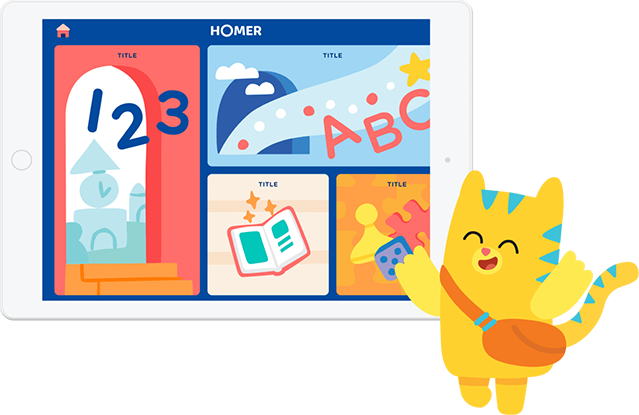
Technology is an effective way to help your child master decoding. The HOMER App by Begin uses a research-based approach to help children learn to read. It offers personalized lessons, games, and activities to keep young readers engaged and motivated.
With the HOMER app, your child can practice essential reading skills like:
- Phonics
- Sight words
- Decoding
- Reading comprehension
- Vocabulary building
The app also includes a parent dashboard where you can track your child’s progress and receive tips on supporting their learning. It’s a great tool for busy parents who want to supplement their child’s reading instruction in a fun and interactive way.
15) Understand Common Errors When Decoding in Reading
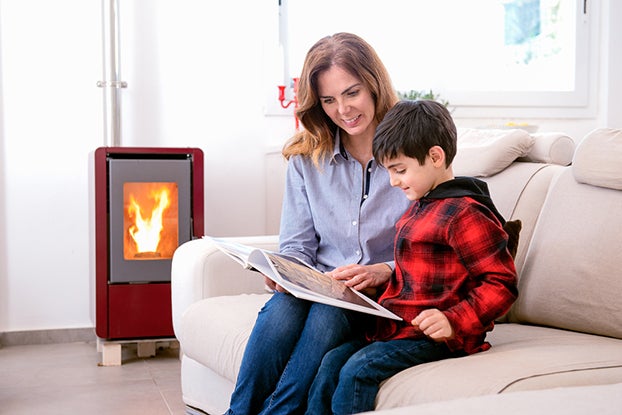
As your child begins decoding, it’s natural for them to make mistakes. Understanding some common errors and knowing how to handle them can support your child’s reading progress.
Here are four common decoding errors children make:
Guessing a Word That Starts with the Same Letter
This mistake occurs when a child sees the first letter of a word and automatically assumes they know the whole word. Instead of looking at the rest of the letters to decode the word, they guess based on that first letter.
To help your child overcome this, encourage them to look at each letter and say its sound before putting them together to form the word. This will help them break down the word and use their decoding skills.
Skipping a Word
Skipping a word can happen when your child is trying to read too quickly or is not fully focused.
To address this mistake, encourage your child to slow down and read every word. Ask them to point to each word as they decode it so they always know which word they’re on.
Focusing on the Pictures
If your child is decoding a book with many illustrations, they may rely too heavily on the pictures when reading. This can make them think the words say something different than what is written.
For example, they might think the word “hen” is “chicken” because of the picture.
Remind your child that pictures can help you understand the story, but they don’t tell us the words. Encourage them to focus on the letters and sounds.
Mixing up Similar Letters
When your child reads the word “bed,” they might say “deb” because the “b” and the “d” look similar, especially when they’re next to each other. This can also happen with the letters:
- p and q
- m and w
- i and j
- r and n
To help your child master these confusing letters, have them draw the letters in the air with their finger while saying their names. This will help reinforce the shape of each letter and distinguish the difference between them.
You can also try the Letter Sort activity described in this post.
16) Take Brain Breaks
Learning to read is hard! It takes a lot of focus and concentration, which can be tiring for young minds. To help keep your child engaged, take frequent brain breaks when practicing reading.
A brain break is a short activity that allows your child to relax and recharge before returning to work. They can:
- Do a few jumping jacks
- Play with a favorite toy
- Close their eyes and take a deep breath
- Draw or color for a few minutes
- Dance to a favorite song
It’s amazing how much a short break can help.
17) Ask, “Does That Make Sense?”
While your young reader will make some mistakes as they decode, you want to help them learn to recognize their mistakes on their own so they can fix them. One way to do this is by asking your child, “Does that make sense?” when they’ve incorrectly decoded a word.
For example, if a sentence says, “A dog has four legs,” your child might accidentally say, “A dog has four ligs.”
After they finish reading the sentence, ask them if that made sense. You can say:
- What are ligs?
- What sound does “e” make?
- Can you try that word again?
This type of questioning helps your child become aware of their mistake and encourages them to try again. It also helps them understand that reading isn’t just about sounding out words; it’s about making sense of the story.
18) Mix in Some Sight Words
Decoding is an essential part of reading instruction. But not every word is decodable; some can’t be sounded out phonetically.
Many of these words are sight words, high-frequency words that young readers should know by sight. These include:
- The
- Said
- And
- To
When you add these words to words your child can decode, you can create even more sentences for them to read.
Use the sight word games in this post to help your child practice.
Incorporating Decoding into Everyday Activities
As adults, we’re unconsciously decoding all the time without even thinking about it. We read road signs, recipes, instructions, social media posts, emails, text messages, books, and more.
If you can bring some intentionality to the process of translating written words into speech, you can find countless moments within your day to help your child practice.
A few ideas for slipping decoding into your daily routine include:
Look for Opportunities
If you can keep your eye and ear out for moments to pause and practice decoding, you’ll be able to help your child many times a day in short bursts.
Sound out their name when you call them to the breakfast table. Break down words on signs in the grocery store or at the bus stop. Choose a few words to focus on when you read your bedtime stories together.
Make Decoding Fun
This idea is worth repeating! If you can make practicing decoding light and creative, your child will be more open to it.
Try playing a game of “I Spy” with sounds (“I see something that starts with an /r/ sound”). Or choose a phoneme and tell your child you’re going to become detectives to search for it all day long.
Use the Objects around You
If you have alphabet magnets on your fridge, ask your child to spell out words with them. If you take out the play dough, make letters out of it. Build words with blocks.
When you make decoding a multisensory activity, you increase the chance your child will enjoy it. And for kids, play and fun are important aspects of learning.
Engage in Lots of Conversation
Expanding your child’s vocabulary ultimately grows their decoding skills, too. Exposing your child to a rich and diverse array of vocabulary words positively affects their ability to read down the road. Hearing words first makes it easier to decode them written on the page later.
Let your child drive the topic of conversation, and introduce new vocabulary words as you talk!
Build Books into Your Day
Any positive interaction with a book is an opportunity for decoding. Try:
- Creating a space in your home dedicated to reading
- Putting books everywhere (yes, in the kitchen and bathroom too!)
- Paying attention to what your child is curious about and getting books from the library about those topics
- Creating as many rituals as you can around reading (such as before bed, while waiting at the doctor’s office, and on car rides)
Use Small Moments of Time
It only takes a minute or two to ask your child to spell a three-letter word or to sound out a word that you see around you.
Small moments like these can add up and make a big difference in your child’s decoding abilities. It also demonstrates that reading and learning can happen anywhere, not just at a designated time or in a classroom.
Here are some decoding activities that you can do in five minutes or less:
- Scramble up three letters and ask your child to unscramble them into a word
- Ask your child to look around and try to find a word they can sound out
- Have a word reading drill and see how many index cards your child can correctly decode in two minutes
- Play a game of “I Spy” with words instead of objects
Learn to Read with Begin
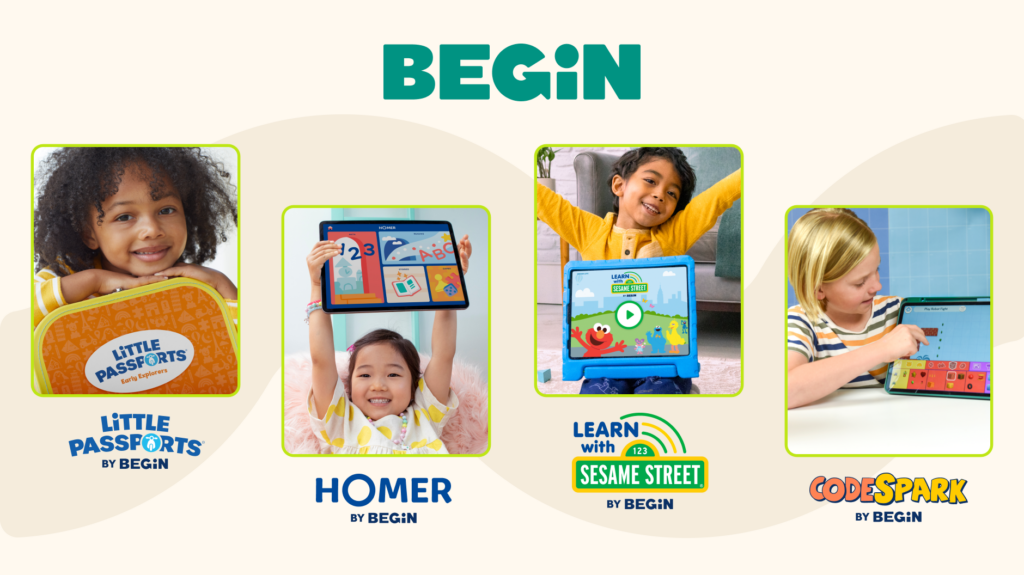
Decoding in reading takes a while to master. But if you incorporate it into your child’s day-to-day life, they’ll have an easier time learning it. Once they feel confident about matching letters on the page to sounds, they’ll be on their way to real reading!
And we can help! Our HOMER app has been proven to raise early reading scores by 74% with just 15 minutes of use a day. Take a look and discover screen time you can feel good about!




